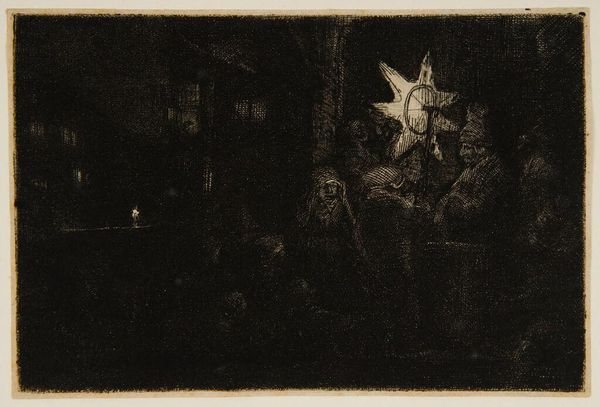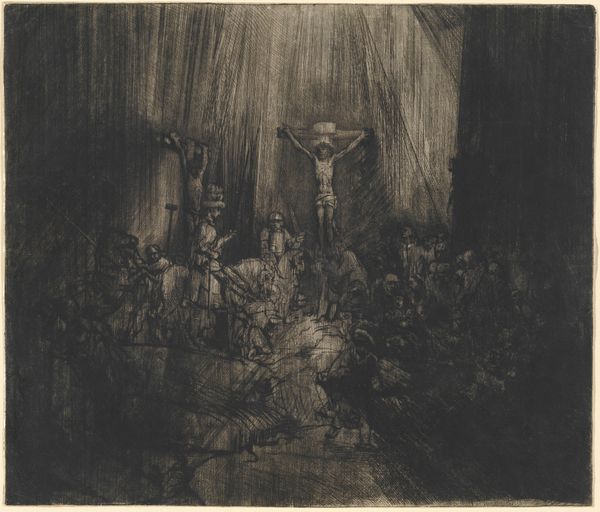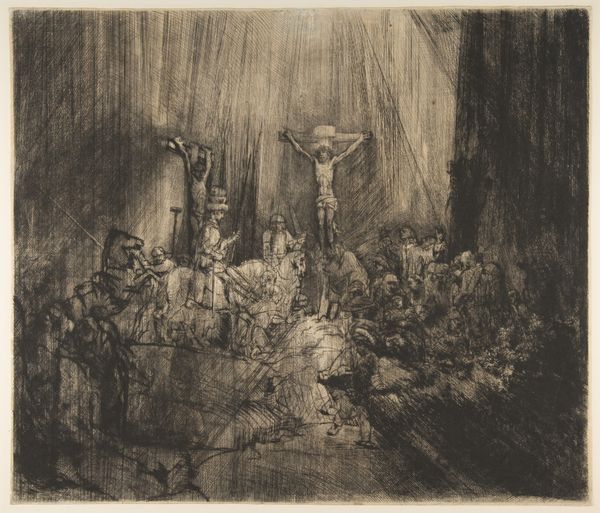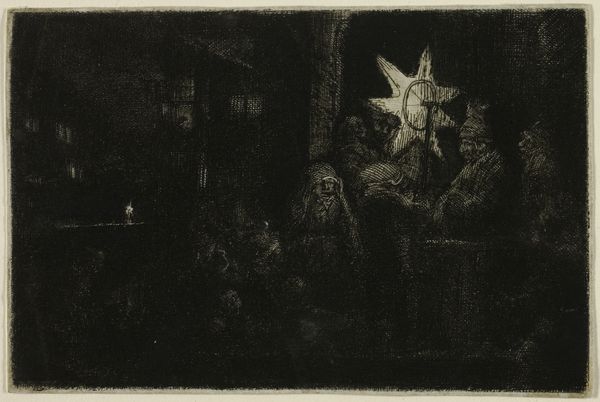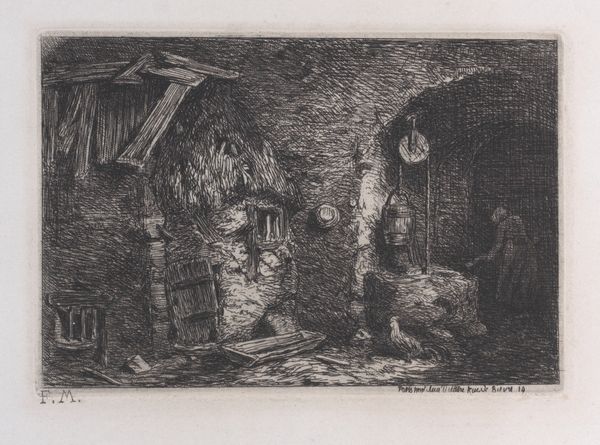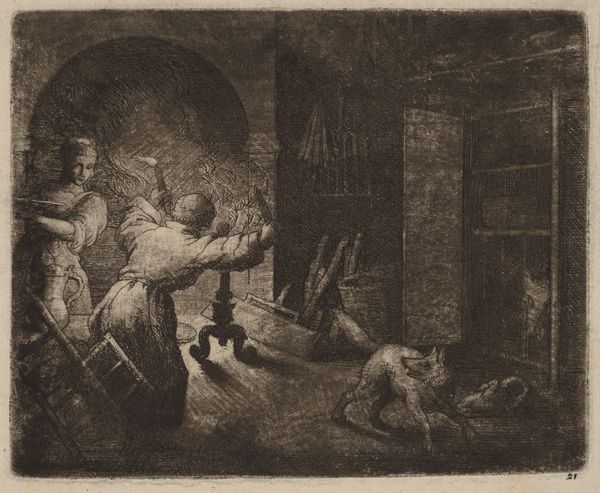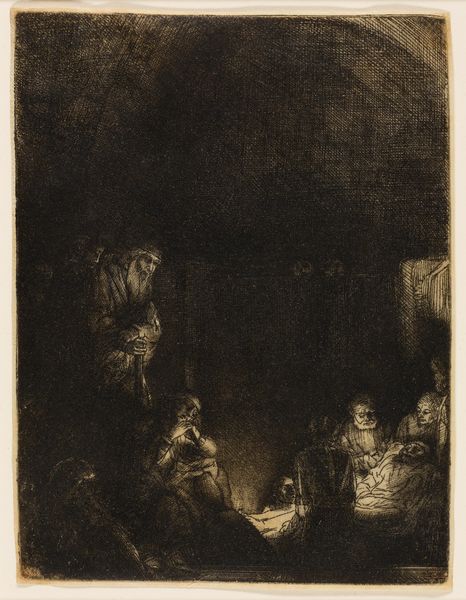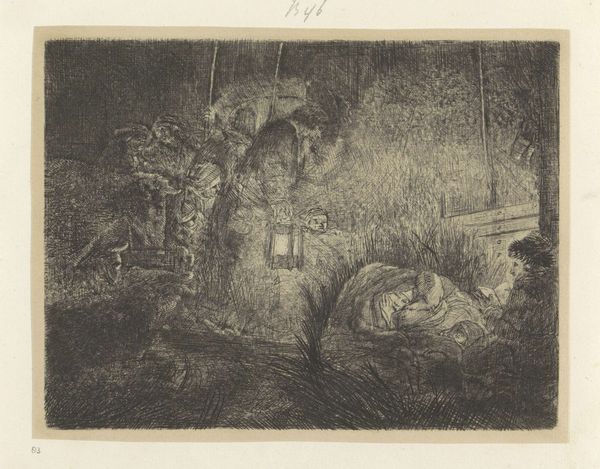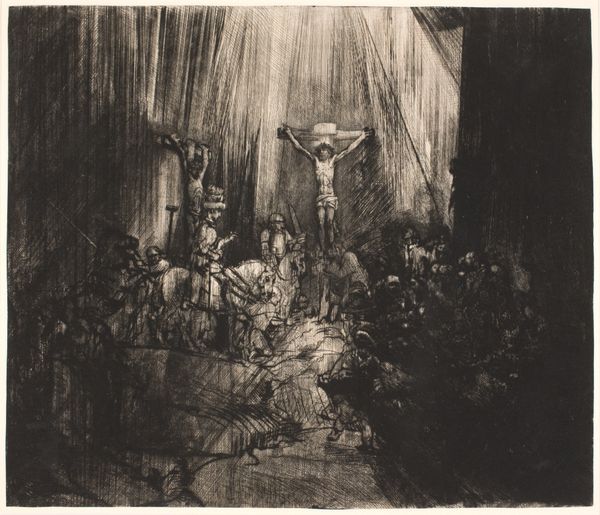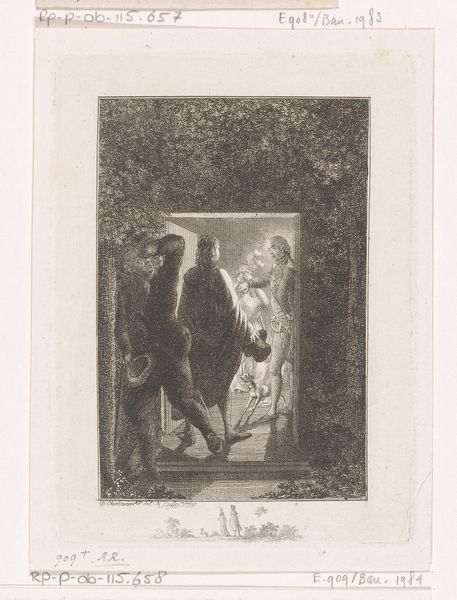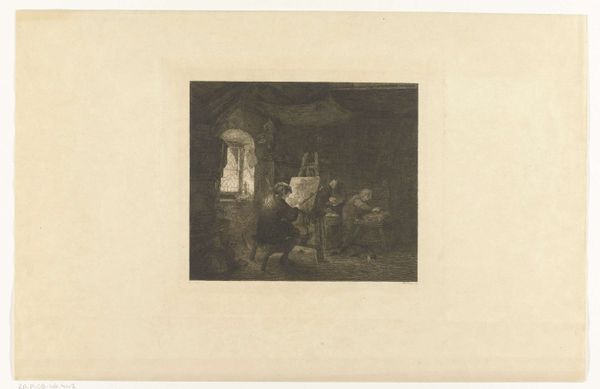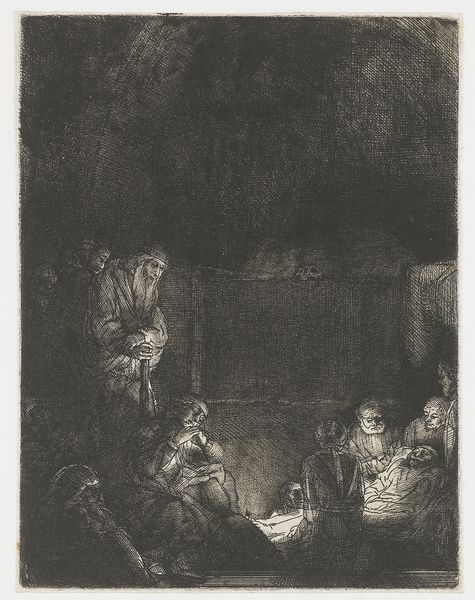
drawing, print, etching
#
drawing
#
baroque
#
dutch-golden-age
# print
#
etching
#
figuration
#
history-painting
Copyright: Public Domain
Curator: Immediately striking is the sheer density of tone, the almost oppressive darkness that seems to envelop the figures. There's a certain solemnity to the composition. Editor: Indeed. What you are responding to is typical of Rembrandt van Rijn, who created this etching known as "The Star of Kings: A Night Piece," likely sometime between 1646 and 1656. It's currently held at The Metropolitan Museum of Art. What resonates so powerfully, I think, is how it echoes socio-political performances, when the poor would carol the wealthy as a type of ritual reversal. Curator: The print’s stark contrasts contribute to its somber quality. Notice the interplay between light and shadow and how that illuminates certain characters and obscures others in the space. We immediately want to resolve where the narrative emphasis falls. Editor: Exactly. That sharp division isn't just a visual trick. Rembrandt used those artistic binaries as an interrogation, making a statement about power and its uneven distribution within Dutch society. Even in rendering the scene in what appears as the intimacy of a home, Rembrandt touches upon much bigger social commentaries through dress and gesture. Curator: Note how Rembrandt used very subtle scratching in the metal to produce this final image. In "The Star of Kings," look at the complex layering of these small, intentional markings. That etching technique results in textures and surfaces across this night scene, which are all very tactfully managed and highly effective. Editor: I agree. These figures here under this almost grotesque star represent a group asking for acknowledgment and care—consider then its original viewers who would receive that pointed demand as part of a tradition around Epiphany! By using that religious symbolism, Rembrandt’s statement also highlights inequalities perpetuated under Christianity itself. Curator: Ultimately, its strength is that balance of technique with form. How Rembrandt evokes light within profound darkness using his materials makes "The Star of Kings" not just formally stunning but full of potent effects. Editor: Precisely. I leave contemplating this potent combination of shadow and symbolism reflecting how artists act as both interpreters and instigators in critical social dialogues.
Comments
No comments
Be the first to comment and join the conversation on the ultimate creative platform.
